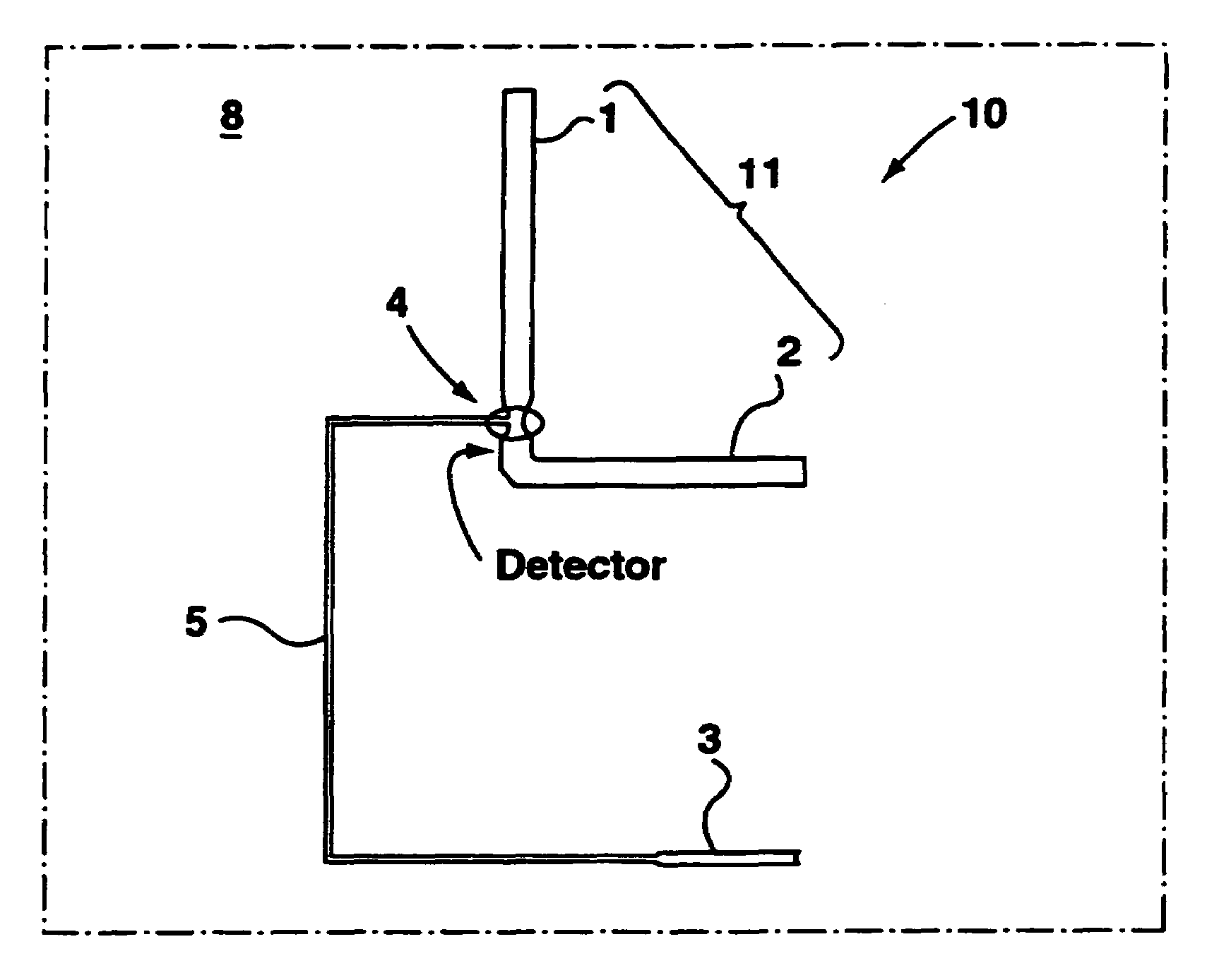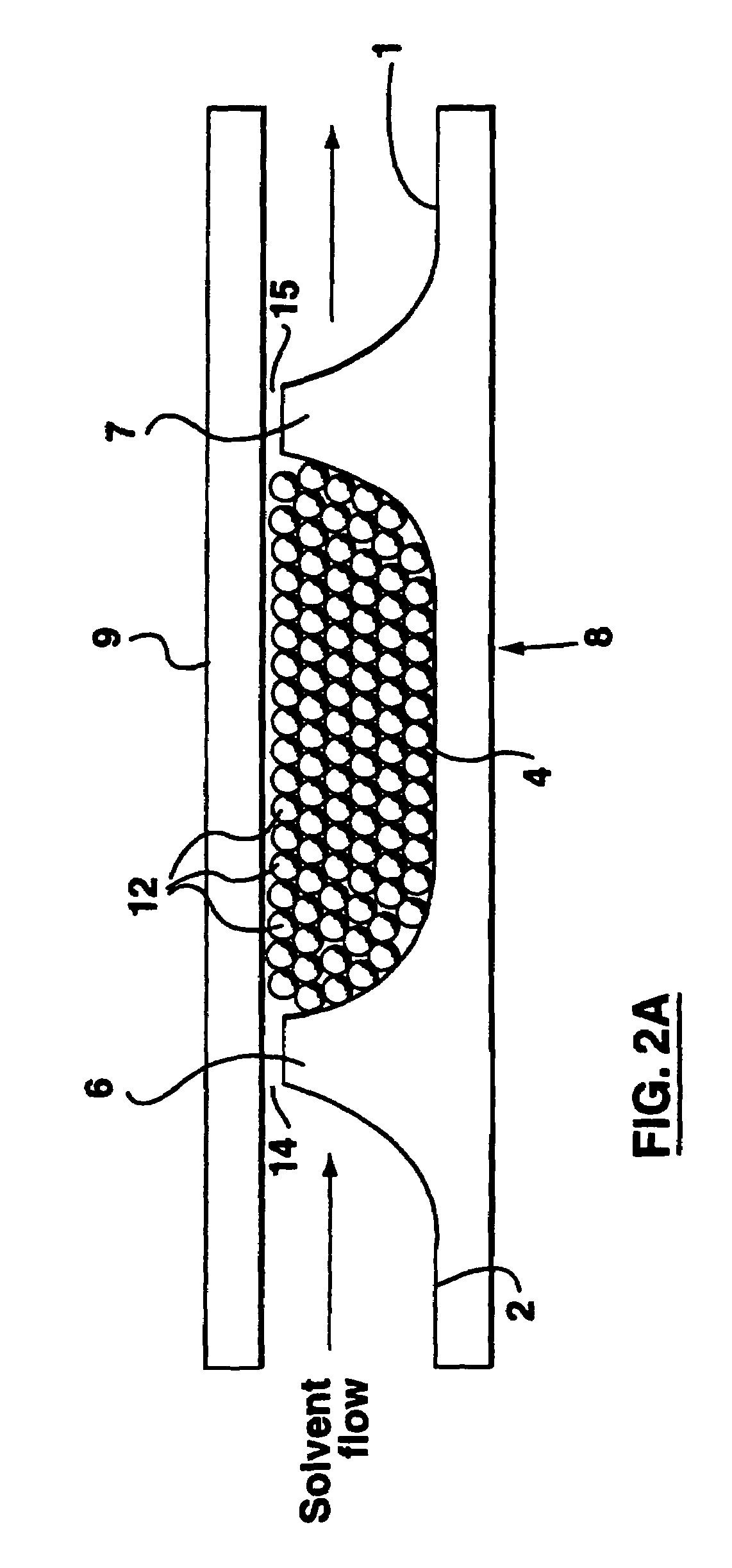Apparatus and method for trapping bead based reagents within microfluidic analysis systems
a microfluidic analysis and bead technology, applied in the direction of diaphragms, component separation, electromechanical devices, etc., can solve the problems of limiting the utility unable to be readily packed or exchanged, and unable to achieve the effect of effective utilization of the reagent delivery vehicle within the microfluidic devi
- Summary
- Abstract
- Description
- Claims
- Application Information
AI Technical Summary
Benefits of technology
Problems solved by technology
Method used
Image
Examples
example
[0088]To illustrate the present invention by way of example, the inventors conducted a series of experiments, which are described here.
Chip Design
[0089]FIGS. 1A and 1B show a microfluidic device 10 as used in these experiments. The device 10 comprises a main channel 11 formed into the top surface of a substrate 8, and the main channel 11 is separated by a chamber 4, also formed into the substrate 8. Two branches of the main channel 11, as separated by the chamber 4, are further identified as main reservoirs 1 and 2. The chamber 4 is connected to a packing material reservoir 3 by a narrow side channel 5. The packing material reservoir and the narrow side channel 5 are also formed into the substrate 8. FIG. 1B shows an enlarged image of the chamber 4 obtained with a scanning electron microscope (Jeol X-Vision JSM6301FXV, Peabody, Mass.). The chamber 4 is formed by providing two weirs 6, 7 formed across the main channel 11 at a relatively narrow portion of the main channel 11 (FIG. 1A)...
PUM
| Property | Measurement | Unit |
|---|---|---|
| diameter | aaaaa | aaaaa |
| diameter | aaaaa | aaaaa |
| path length | aaaaa | aaaaa |
Abstract
Description
Claims
Application Information
 Login to View More
Login to View More - R&D
- Intellectual Property
- Life Sciences
- Materials
- Tech Scout
- Unparalleled Data Quality
- Higher Quality Content
- 60% Fewer Hallucinations
Browse by: Latest US Patents, China's latest patents, Technical Efficacy Thesaurus, Application Domain, Technology Topic, Popular Technical Reports.
© 2025 PatSnap. All rights reserved.Legal|Privacy policy|Modern Slavery Act Transparency Statement|Sitemap|About US| Contact US: help@patsnap.com



